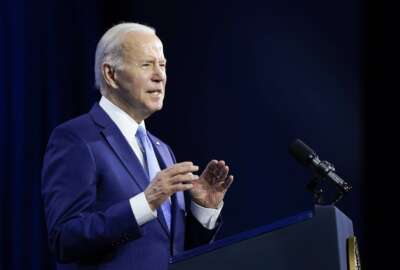14 Big Ten football players poised to break out in the fall
Sophomore quarterback Brian Lewerke of Michigan State is among a number of Big Ten players poised for breakout seasons this fall
A look at football players in the Big Ten this spring who are poised to have standout seasons beginning this fall:
EAST DIVISION
INDIANA
WR Simmie Cobbs, junior: His 2016 season ended the second week when he broke his leg on the first play of scrimmage against Ball State. The year before he led Indiana in all receiving categories and became the sixth Hoosier all-time with a 1,000-yard season. At 6-4 and 220 pounds, he presents matchup problems, and he can play a big role in improving offensive numbers that slipped last year.
MARYLAND
RB Lorenzo Harrison, sophomore: He would have made a run at 1,000 yards as a freshman if he hadn’t missed the last four games because of suspension. He ended up with 633 yards, 57 off the school freshman record, and averaged 7.2 per carry. He’s shifty and hard to bring down — and ready to become one of the top backs in the Big Ten.
MICHIGAN
LB Mike Wroblewski, senior: Keep an eye on this guy when nominations are taken for feel-good stories of the year. He grew up loving the Wolverines and made the team in 2013 after going through an open tryout. He redshirted, tore an ACL and never saw the field his first three years in the program. He was awarded a scholarship last fall and played in nine games, and now he’s competing for the starting middle linebacker job.
MICHIGAN STATE
QB Brian Lewerke, sophomore: Mostly a backup to Tyler O’Connor last season, Lewerke started back-to-back losses to Northwestern and Maryland as coach Mark Dantonio tried to spark an offense that stalled in a loss to BYU. He appeared in four games before breaking his leg . Lewerke, rated a four-star prospect coming out of high school in Phoenix in 2015, is the clear-cut starter entering the fall after throwing for 305 yards in the spring game.
OHIO STATE
WR/H-back Parris Campbell, junior. The Buckeyes lost their top two receivers from a team whose uneven passing game became the major area of concern. Campbell likely will slide into the hybrid H-back position vacated by Curtis Samuel. Coach Urban Meyer has raved about Campbell this spring and expects him to help Ohio State re-establish the deep ball as a weapon. The H-back position also opens up opportunities for him to run the ball.
PENN STATE
DE Shaka Toney, redshirt freshman: The 6-3 Toney has put on 20-30 pounds since showing up weighing just 195 last fall. Even undersized he was hard to handle rushing off the edge, and he was co-scout team defensive player of the year. Coach James Franklin gushed this spring over Toney’s athleticism. Look for him to be in the defensive line rotation right away.
RUTGERS
QB Giovanni Rescigno, junior: After playing in seven games and starting the last five, Rescigno is the clear-cut starter heading into the fall. Rescigno threw five of the team’s seven interceptions, fumbled twice and took 18 sacks. Coach Chris Ash called Rescigno’s improvement a pleasant surprise this spring, particularly in the areas of ball security and decision-making.
___
WEST DIVISION
ILLINOIS
QB Chayce Crouch, junior: Crouch showed promise as a backup last season but injured his shoulder in his first start, against Rutgers, and missed the last six games. Crouch throws a nice ball, but he also gives the Illini a running threat they haven’t had from that position since Nathan Scheelhaase in 2013. Crouch will go into the fall as the “undisputed leader” of the Illini, coach Lovie Smith says.
IOWA
DT Brady Reiff , sophomore: With two starting defensive tackles gone from last season, Reiff has had a lot of opportunity to show his stuff this spring. He began his career as an end but moved inside late last season. He’s 260 pounds, and would like to get up to 270-80, but he’s proved adept at shedding blocks and being a disruptor in the trenches. He’s the younger brother of ex-Hawkeye and current Minnesota Vikings offensive lineman Riley Reiff.
MINNESOTA
DE Carter Coughlin, sophomore. One of the nation’s top five outside linebacker prospects coming out of high school, Coughlin played a backup role as a freshman. He switched to rush end this spring in what new coach P.J. Fleck said was a move to get the best 11 defenders on the field. Though a bit light for the position at 6-4 and 225 pounds, Coughlin has gotten good reviews for rushing the QB, stopping the run and his pass coverage.
NEBRASKA
TE Tyler Hoppes, senior. The 6-4, 245-pounder started his career at Division II Wayne State, switched from defensive end to tight end and played some special teams in 2015. A fourth-stringer last year, he’s poised to become the starter after the Huskers lost three tight ends. He had a strong spring and could benefit from the full installation of Mike Riley’s pro-style offense, which emphasizes throws to the tight end.
NORTHWESTERN
WR Jalen Brown, senior, graduate transfer from Oregon: The Wildcats have a huge void to fill after losing the Big Ten’s top receiver in Austin Carr. Brown caught 19 balls for 318 yards and three TDs for the Ducks last season and could be Northwestern’s new go-to receiver. He graduated from Oregon in 3 1/2 years and will have two seasons of eligibility.
PURDUE
LB T.J. McCollum, graduate transfer from Western Kentucky: The Boilermakers have ample returning experience at linebacker, but the 6-foot-3, 240-pound McCollum can be a difference-maker. He followed new coach Jeff Brohm and co-defensive coordinator/linebackers coach Nick Holt from Western Kentucky, so he knows the system. In the last two years he made 191 tackles, 15.5 for losses. McCollum was rehabbing an elbow injury and limited this spring.
WISCONSIN
CB Nick Nelson, junior, transfer from Hawaii: Badgers will replace four-year starter Sojourn Shelton with a guy who started two years for the Rainbows. Nelson’s 15 pass breakups in 2015 ranked second in the Mountain West. He sat out last year as per transfer rules and he added polish to his game on the scout team.
___
More AP college football: www.collegefootball.ap.org
Copyright © 2025 Federal News Network. All rights reserved. This website is not intended for users located within the European Economic Area.





